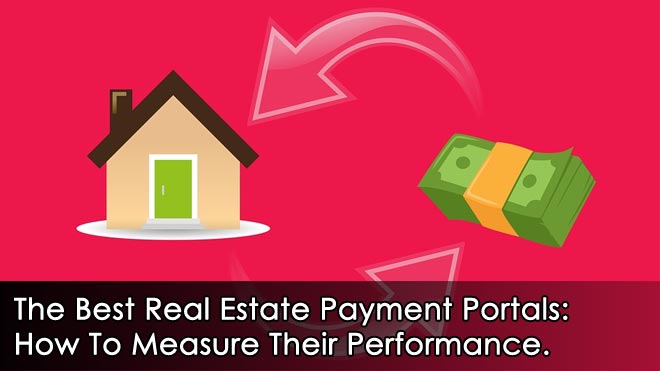The Best Real Estate Payment Portals: How To Measure Their Performance.
We analyze the most profitable real estate portals.
We have already talked about real estate portals on other occasions, and the general consensus is that they work. A real estate agency can hire them, publish all their properties, and receive clients in exchange for it.
So which real estate payment portals work best? Which ones give me more clients in exchange for less budget?
Not only do you have to hire a pack to be able to get contacts and sell houses faster, but you also have to optimize your real estate marketing budget. Agencies that do so make many more leads for the same money, and can make sales more easily.
See Also: 28+ Best Classified Ads Php Scripts For Real-Estate
Why hire a real estate payment portal?
The real estate portals are separated into two groups: paid real estate portals and free portals.
In the payment portals it is possible that you can publish one or two ads for free, but from there a real estate agency has to pay to be able to advertise and send their properties. On the other hand, a free portal will not charge you anything and will allow you to send as many ads as you want.
If so, why aren’t only free portals being used?
To get customers, you have to pay
In general, a paid real estate portal works much better than a free one.
This is because the portal reinvests the income it generates in advertising – it advertises in Google AdWords, enhances its brand and image, organizes events, and much more.
All this strengthens the portal and positions it well above other free portals, which surely work based on advertising banners or highlights. This pays much less than paying to advertise.
Generally, if you don’t pay, you are not a customer, you are the product.
How to analyze the performance of portals
Keep in mind that a real estate portal is a sales channel – just like your website, your billboards, or the rest of your marketing strategy.
If you have already advertised on several payment portals, you should analyze your investment. Some real estate companies spend thousands of Euros every month on a portal, and yet they do not know how profitable they are.
Step # 1: Make a list of your portal contacts
The first thing to do is create a conversion funnel.
The purpose of the funnel is to organize the sales process of your real estate in phases. By creating this sequence, you can know where your sales strategy is failing and take steps to fix it. You can see this in our real estate CRM, within each new sale opportunity:
In this case, we are going to make a somewhat different funnel. Instead of focusing on the sales process, we will focus on the customer acquisition process.
Go for it.
The first thing is to make a count of all the contacts that you have obtained from each real estate portal. In this list we will know how many people have been interested in your apartments, separating them by the portal. To do it, I recommend using Excel since we will be working with many numbers.
If you use you can get this from the Reports section, since the opportunities enter automatically and tell you if a contact comes from a portal, the website, or another site:
You can get information from the last month, the last three months, or even the whole year, remember to be consistent. As you gather all the information, your list should look like this:
Step # 2: Find the Cost of Acquisition of Contacts
We already have our potential clients – now we have to know what each client has cost us to obtain. In other words, knowing our acquisition cost for each portal.
The acquisition cost is very important because for practical purposes you are paying a real estate portal to provide you with interesting contacts. It is the same as paying Google to advertise in the search engine, and to get people who are interested in your properties.
That means that the more clients you get from a portal with the same money, the better.
To find the acquisition cost, add to each portal the amount you are paying to obtain those clients. Keep in mind that you must calculate what you have paid to the portal during the same period as the number of clients you have registered – if you have taken out all the potential clients of the last year, you must write down what you have been charged during that period of time. This is very important to have accurate information:
When you have all this information, you can now calculate the acquisition cost by dividing the expense by the number of customers provided. Thus, you will know what you have spent to obtain each customer on average:
With this information, you can start to compare the performance of each portal. In our fictitious analysis, the overseas block has a much lower cost.
If you do the same analysis with your real data, you can start to have a good idea of what each portal yields.
Step # 3: Find the Conversion Rate by Portal
Now we are going to go one step further. It is possible that a portal will bring you many potential clients, but if they are not of quality, it is of no use.
The next step is to know your conversion percentage for each real estate portal.
In electronic commerce, a conversion is a closed transaction; in this case, a house sold. So let’s take a look at the portals that generate the most conversions for you.
The reason for this is because not all leads are the same. It is possible that you are receiving a lot of contacts from a real estate portal, but most of them are not interested in buying your houses. In fact, a portal can easily inflate the number of leads just to justify your investment.
To do this, gather all the sales you have achieved in this period of time, and group them by portals:
Now you only have to divide the number of sales achieved by the number of contacts of each portal. This will give you a conversion percentage, which basically tells you the probability with which a contact closes a sale:
It must be said that a real estate agency does not usually have enough data to achieve statistical validity – for that you would need to close thousands of sales consistently. Still, it is an important piece of information because it tells you the performance of each portal.
It is possible that one of the portals that you have contracted provides you with higher quality clients with a certain consistency, which gives you clues to increase your investment.
Step # 4: Calculate the ROI of the real estate portal
One last step we can do is find our ROI – the return on investment.
ROI is very important because it allows us to know which portal is more profitable. Put very simply, it tells us how much income each Euro we invest in a real estate portal generates.
To calculate ROI, we first have to get the volume of closed sales from each portal. We can take the list of sales we have made previously, but in this case we are going to add the fees we have achieved – instead of the sales count, the money generated:
Once we have everything written down and distributed for each portal, we add a last column to calculate the ROI:
ROI = (Profit – Investment) / Investment
The reason we do this with our sales volume is because of the difference in commissions. It is possible that a portal has a higher conversion rate, but that it provides us with contacts interested in cheap apartments (and with few commissions). On the other hand, a portal with fewer conversions may give us lower quality leads, but that result in a higher amount of fees:
Analyze your results
Again, it must be remembered that these data are indicative. Since most real estate companies close less than 10 sales a month, there is not enough data to obtain reliable statistical information. A portal with an ROI of 14000% does not have to be better than one of 13,790%.
However, the key to all this is to know the month-to-month performance of each of your real estate portals. Although you cannot trust that the data is consistent, you can obtain very valuable information.
Depending on your results, you can use more than one strategy:
- Observe if there are consistent results in a portal, and increase or reduce investment
- Find seasonal trends, by dividing your analysis month by month
- Know your best investments so far, and the worst ones too
- Compare last year’s performance with the previous one
To attract clients, the vast majority of real estate agencies use a fairly simple formula: they pay real estate portals and they give them prospects. Each portal has a number of different products – featured, front page properties … but all are based on getting visibility for your property portfolio.
Dependence on real estate portals
The main real estate portals are giants in Google results. They completely dominate the results pages, always showing up in the top searches. For example, take a look at the results for flats in Valencia :
As you can see, you have all the portals taking turns to appear first. There isTajarat… and the list goes on. In addition, in that search there are 4 payment results, which also belong to portals.
That is because the objective of a portal that offers houses is just that: to sell visibility online . And that it is so difficult to position in Google is something normal, because the real estate world is very, very competitive.
With your real estate website, there is no way to find yourself among these popular search results. In fact, appearing on the first or second page of Google is practically impossible unless you invest in paid advertising.
Do you know the sales channels of your real estate?
Although apartment portals are entrenched in Google, relying entirely on them is still a bad idea.
It is the equivalent of putting your eggs in the same basket.
Like any business, you surely have a cost structure to pay for the office and employees. I imagine that you also have a marketing budget dedicated to real estate portals.
So what happens when a portal decides to raise prices?
If your business is affected by changes of this type, you are depending on them to survive. And that takes away your freedom and power of decision in difficult situations.
The solution? Diversify your sales channels.
The different real estate sales channels
Although it may not seem like it, your real estate agency can get clients from many different sites, not just from a real estate portal. What happens is that paying a portal is the easy and fast way.
There are many ways to find a client: you can reach them through Google, use social networks, or use email. The same goes for a real estate agency and its website.
There are also offline channels, such as the office or billboards. Before they existed, most sales were achieved through traditional means.
If we make a list, these are just some of the sales channels that you have at your disposal:
- Your office and showcase
- Advertising posters
- For Sale signs in real estate
- The website
- Email marketing
- Social networks
Each of them is capable of generating clients for you, if you know how to use them.
How to avoid relying on portals
To achieve a better balance in your real estate marketing strategy, the first thing you must do is end that dependence.
1. Position your real estate website on Google
The first thing you should do to diversify your customer acquisition is to appear on Google. Yes, just like real estate portals.
Surely you think that it is not possible to compete with big companies – after all, they have entire teams dedicated to positioning their brand. And the budget they dedicate to it may have a couple of zeros more than yours.
But you can still make a dent in Google.
The way to do this is to take advantage of the long tail of marketing. The real estate portals seek to appear in general and national results, in searches such as ‘Apartments in Madrid’.
Your real estate agency is likely to be concentrated in a small regionIt may be a big city or a small town, but that specialization gives you an advantage over the portal. Also, your specialty may be selling homes to a very specific audience – for example, villas on the seashore.
By specializing in this type of house, you can focus on a small niche in the real estate world,and position yourself in the search engine. You just have to start with a real estate content strategy.
2. Build a brand with social media
Another way to generate customers is with a strong brand.
The main reason why everyone first turns to a real estate portal to find a home is because portals spend day and night creating a brand. Doing real estate branding.
Branding is what makes your name sound even though they don’t visit your page – it’s what makes the word spread and people talk about your company naturally.
Building a strong brand is a constant job, of course. There are a wide variety of things you have to do if you want to stand out from the other real estate agencies:
- Get involved in your community
- Advertise yourself publicly and appear in the media
- Have a blog that people want to visit every day
- Become a reference in the sector
But having a strong brand is an incredible competitive advantage. It’s what allows you to survive even when the entire industry collapses. Or what makes people come to you when they want to look for a flat.
3. Look for other types of paid advertising
Paying for clients has two advantages: it is quick and easy. And if you want to pay to get clients, real estate portals are just an alternative.
You can also use other platforms – Google AdWords and Facebook Ads, without going any further. Each platform has its uses, but both allow you to reach a specialized audience that is interested in buying a home.
In the case of Google AdWords, you can pay to appear in the first search results. Each search term has a certain cost based on competition and people’s interest. Here the portals pay a lot to stay in the first position, but you can use the same long tail strategy and focus on searches in your area.
With Facebook Ads, things change. Here the campaigns are a bit cheaper, and you can reach people by demographic filters. That is, you can filter people by age, gender, and tastes or interests. Facebook Ads is a good platform that helps you boost your brand, and generate sales through your website.
4. Take advantage of email marketing
Email marketing is one of the most wasted forms of promotion in the real estate sector. And yet it’s a great way to keep in touch with your prospects without spending too much time.
Since you depend on real estate portals, you can take advantage of the contact information they send you: Create a mailing list and send relevant emails automatically.
I’m not talking about bombarding your clients with floor suggestions over and over again – that alone won’t close a sale.
Instead, email marketing is about interacting with your contacts – treating them like people – to achieve a number of goals. The biggest of them is that they buy a flat, yes. But you can also take advantage of each interaction to fulfill your three previous strategies:
- Share interesting content to create a brand
- Do customer research and meet your ideal customer
- Build customer loyalty after a sale and get referrals
- Get them to share your content on social networks
Best of all, email marketing allows you to scale your sales. You only have to configure the whole system once, and you can send emails automatically while you invest your time in other things.
Start to diversify
In short, depending on other companies to get customers is dangerous. That forces you to keep up with others.
In my opinion, every real estate company should invest in its own brand and stand out on its own foot. That is not an easy task, but in the long term it brings much more value than investing month after month in advertising.
If at any time you are forced to reduce your advertising budget, it will be difficult for you to have the same customers.







